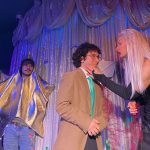By Mia Becker-Hansen | Head of Science and Technology
The launch of the £7.5 billion James Webb telescope has been delayed again, after an incident during its final preparations to place the telescope on top of its launch vehicle. The launch date has been pushed back at least four days to allow for more checks to be done. It will now go up no earlier than the 22nd of December.
The James Webb Space Telescope (JWST) is the successor to NASAÔÇÖs famous Hubble telescope. It’s designed to look deeper into the Universe than its predecessor, and therefore look further back in time – more than 13.5 billion years ago. The aim is to see the first stars that were created. Scientists also expect to use its more advanced capabilities to study the atmospheres of distant planets in the hope that signs of life might be detected.
The JWST will primarily be an infrared telescope, optimized for 600 to 28,000 nm wavelengths of light. This means it wonÔÇÖt be able to see green or blue light, just orange and red ÔÇô plus a wide range of longer wavelengths beyond that. For many astronomical objects including star-forming regions, exoplanets, and the most distant galaxies, these very long wavelengths are more useful to astronomers than the visible spectrum.
JWSTÔÇÖs complicated design is due to its mirror, which is constructed from 18 hexagonal segments which can fold up for launch and then deploy once in space. NASA even consulted with origami specialists to find an optimum way for the telescope to essentially ÔÇÿunfoldÔÇÖ in space. The mirror has to be shaped and polished to extremely high accuracy in order to produce images with the necessary clarity, they are then coated with a thin layer of pure gold, to maximize reflectivity at infrared wavelengths.
The main mirror has a 6.5 metre diameter. ThatÔÇÖs around 2.7 times as big as Hubble, but the actual performance improvement is around six times better.
Engineers were in the process of attaching the telescope to its launch adapter, the large ring that will hold it in place atop its rocket, when a securing clamp unexpectedly popped open. The concern is that the event will have sent a sharp mechanical shock through the telescope.
The US space agency statement read: “A Nasa-led anomaly review board was immediately convened to investigate and instituted additional testing to determine with certainty the incident did not damage any components. Nasa and its mission partners will provide an update when the testing is completed at the end of this week.”.




